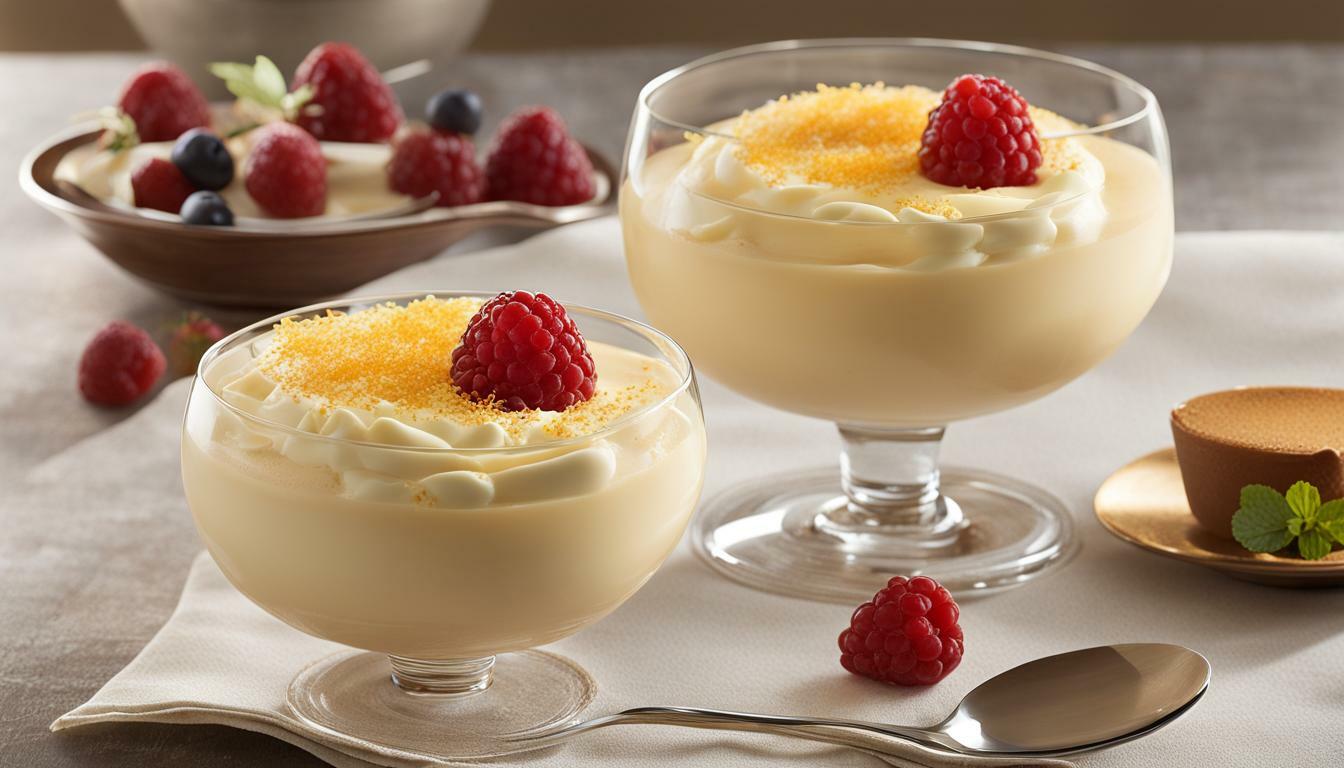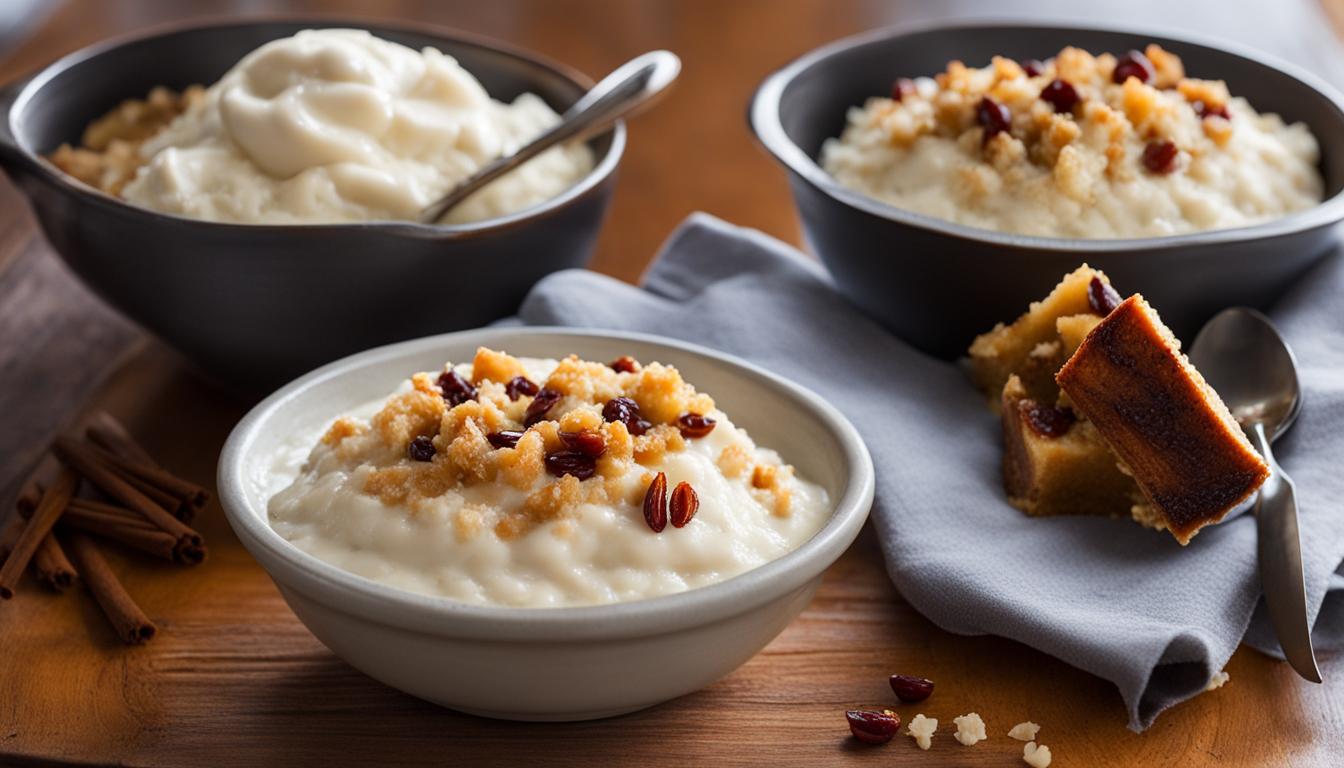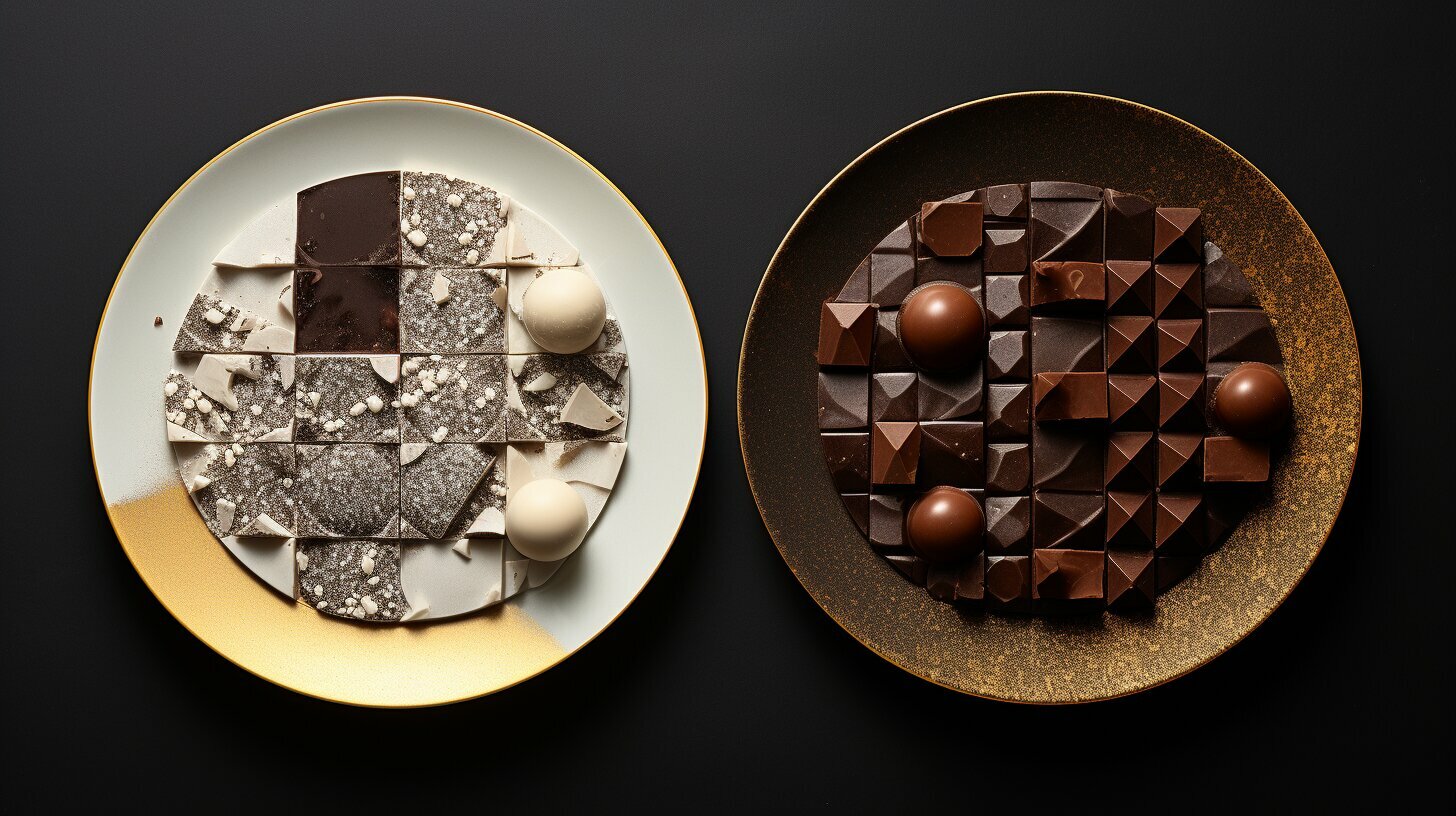When it comes to desserts, pudding and mousse are two classic options that have been enjoyed for centuries. While they may seem similar at first glance, there are actually several key differences between the two. In this article, we will explore the main characteristics that distinguish pudding and mousse, from their texture and flavors to their culinary origins and presentation.
Key Takeaways:
- Pudding and mousse are two popular desserts that have significant differences in texture, flavor, and presentation.
- Pudding is typically thick and creamy, while mousse has a lighter and fluffier texture.
- Pudding comes in a range of indulgent flavors, while mousse is commonly found in lighter and more refreshing variations.
- Pudding has a long history in medieval Europe, while mousse originated in France in the late 18th century.
- Both desserts offer endless possibilities for customization and can be enjoyed on their own or as part of more complex creations.
Texture
One of the most notable differences between pudding and mousse lies in their texture. Pudding is typically thick and creamy, with a smooth and velvety consistency. This is achieved by using ingredients like milk, cream, eggs, and sugar, and thickening agents like cornstarch or flour. Pudding is often served chilled or at room temperature, and can be spooned or scooped easily.
In contrast, mousse has a lighter and more airy texture, achieved by incorporating whipped egg whites or cream into the mixture. This gives mousse a delicate and fluffy mouthfeel. Mousse usually has a thicker consistency than whipped cream, but is still soft and can be piped or spooned easily.
While both desserts have similar ingredients, the way they are prepared results in vastly different textures, making pudding and mousse suitable for different occasions and preferences.
Flavors
Pudding and mousse also vary in terms of flavors. Pudding can come in a range of flavors, including chocolate, vanilla, butterscotch, and more. It often has a rich and indulgent taste. Mousse, on the other hand, is commonly found in flavors such as chocolate, fruit (such as raspberry or lemon), and even savory variations like salmon or avocado. Mousse tends to have a lighter and more refreshing taste compared to pudding.
Pudding Characteristics: Pudding is known for its rich and indulgent flavors. Its creamy texture makes it the perfect vehicle for a range of flavors, from classic chocolate to unique variations like caramel or hazelnut.
Mousse Characteristics: Mousse is often found in lighter and more refreshing flavors. The airy texture of the dessert pairs well with fruity and citrusy flavors like lemon, raspberry, and passionfruit. However, mousse can also be enjoyed in savory variations, like smoked salmon or avocado.
Culinary Origins
Pudding and mousse have different culinary origins. Pudding has been enjoyed since the Middle Ages throughout Europe. The original recipe consisted of ingredients such as milk, eggs, sugar, and flavorings. The concoction was then thickened by boiling or baking. Pudding also has variations unique to different countries and regions. For instance, rice pudding is particularly popular in the UK and Scandinavia, while in the US, tapioca pudding is a crowd pleaser. In India, they make a sweet custard-like pudding called Kheer, which is made with milk, rice, and sugar, and flavored with saffron, cardamom, or rose water.
Meanwhile, mousse originated in France in the late 18th century. It was initially made with whipped cream and flavored with chocolate. Over time, various variations emerged, including fruit and savory mousses. Today, mousse has become a staple in French cuisine and is enjoyed all around the world. Chefs have experimented with incorporating different ingredients into mousse, such as avocado, salmon, and even cheese.
Both pudding and mousse have stood the test of time and continue to be enjoyed by people of all ages and backgrounds. Their unique culinary histories have contributed to their evolving popularity, and the endless variations and customizations mean these delicious desserts will continue to be a favorite for generations to come.
Serving and Presentation
When it comes to serving and presentation, pudding and mousse take different approaches. Pudding is often served in individual bowls or cups, making it easy to portion out and enjoy. It can be served as is, or it can be garnished with toppings such as whipped cream, fruit, or chocolate shavings. Alternatively, it can be used as a component in other desserts, such as parfaits or trifles.
Mousse, on the other hand, is commonly presented in elegant glassware such as martini glasses or champagne flutes, or as part of a layered dessert, such as a cake or tart. It is often garnished with fresh fruit, chocolate curls, or a dollop of whipped cream. The presentation of mousse is often more elaborate, with attention paid to the visual appeal of the dessert.
Overall, pudding and mousse offer different serving and presentation options, but both can be made to look visually appealing and enticing. When it comes to choosing between the two, it often comes down to personal preference and the occasion.
Variations and Customizations
Both pudding and mousse offer a vast array of variations and customizations, making them versatile and exciting desserts.
| Pudding Variations | Mousse Variations |
|---|---|
| Chocolate, vanilla, butterscotch, caramel, rice, tapioca, bread, and more | Chocolate, fruit (such as raspberry or lemon), coffee, white chocolate, mango, avocado, and even savory variations like salmon or vegetable mousses |
| Layered with cake or fruit to create a trifle | Layered in desserts like tiramisu or incorporated into cakes and pastries |
Whether you prefer a classic chocolate pudding or an exotic mango mousse, there is a variation to please all taste buds. Pudding can be made with different types of milk, like almond or coconut milk, to suit dietary requirements, while mousse can be made with various liqueurs, such as Grand Marnier or Bailey’s, for an extra indulgent touch. Adding toppings like whipped cream, caramel sauce, or fresh berries can elevate the dessert even further.
Both desserts are easy to customize and perfect for experimenting with new flavors and combinations. With a little creativity, you can transform a simple pudding or mousse into a show-stopping dessert.
Conclusion
After exploring the key differences between pudding and mousse, it is clear that these desserts are distinct in their texture, flavors, culinary origins, and presentation. While pudding is known for its thick and creamy texture and rich flavors, mousse offers a lighter and fluffier texture with refreshing taste profiles.
Both desserts offer a variety of variations and can be enjoyed on their own or as part of more complex creations. Whether you prefer the comforting indulgence of pudding or the delicate elegance of mousse, there is no denying that both desserts have a place in our hearts – and on our dessert menus.
FAQ
Q: What are the main differences between pudding and mousse?
A: Pudding and mousse differ in terms of texture, flavors, culinary origins, and presentation.
Q: How does the texture of pudding and mousse differ?
A: Pudding is thick and creamy, with a smooth and velvety consistency. Mousse, on the other hand, has a lighter and more airy texture, achieved by incorporating whipped egg whites or cream.
Q: What flavors are common in pudding and mousse?
A: Pudding comes in a range of flavors, such as chocolate, vanilla, and butterscotch. Mousse can be found in flavors like chocolate, fruit (such as raspberry or lemon), and even savory variations like salmon or avocado.
Q: What are the culinary origins of pudding and mousse?
A: Pudding has a long history and originated in medieval Europe. Mousse originated in France and gained popularity in the late 18th century.
Q: How are pudding and mousse served and presented?
A: Pudding is often served in individual bowls or cups and can be enjoyed on its own or with various toppings. Mousse is commonly presented in elegant glassware or as part of a layered dessert, garnished with fresh fruit, chocolate curls, or whipped cream.
Q: Can pudding and mousse be customized with different flavors and ingredients?
A: Yes, both pudding and mousse offer a wide range of variations and can be customized with different flavors and ingredients, allowing for endless possibilities and unique creations.
 Skip to main content
Skip to main content


